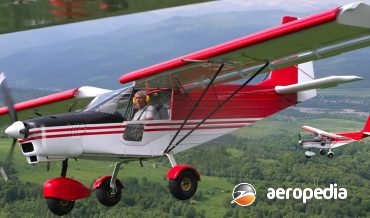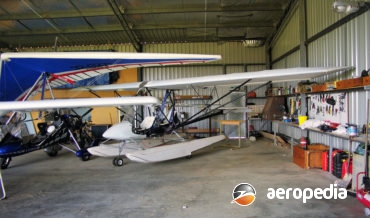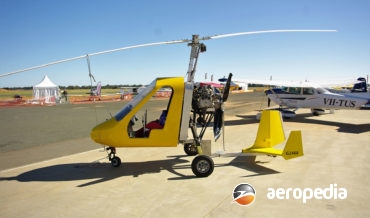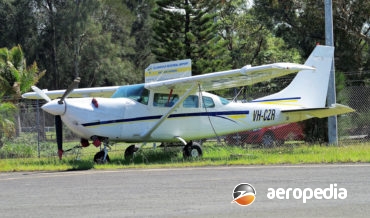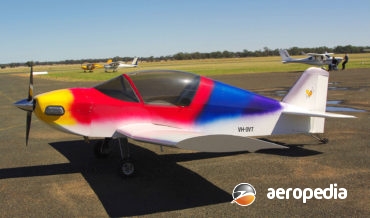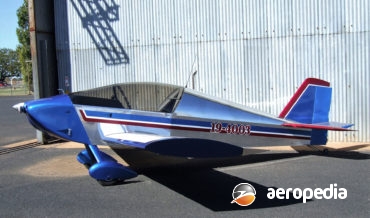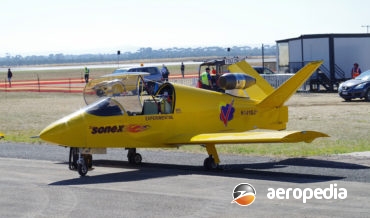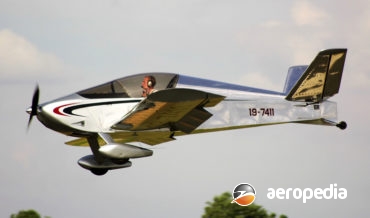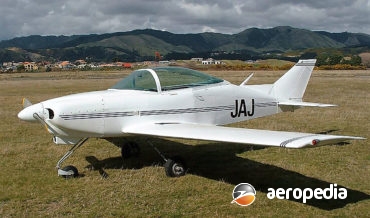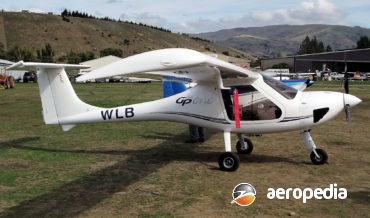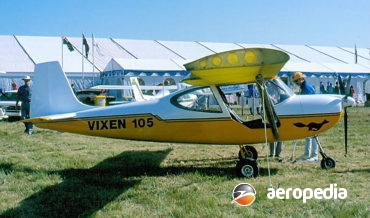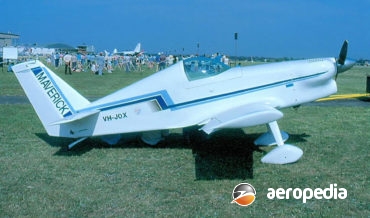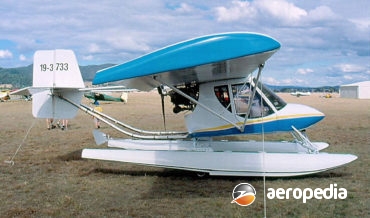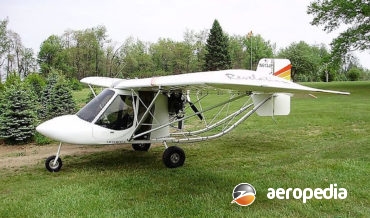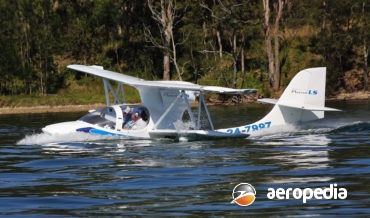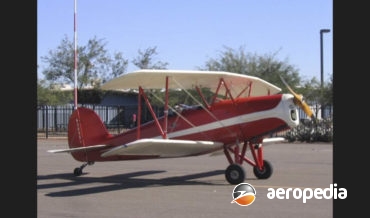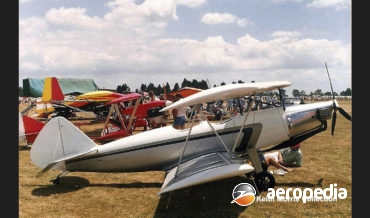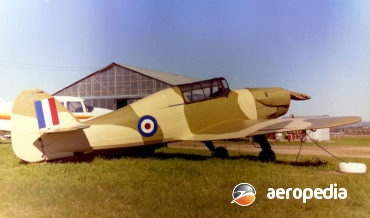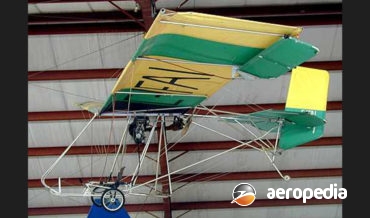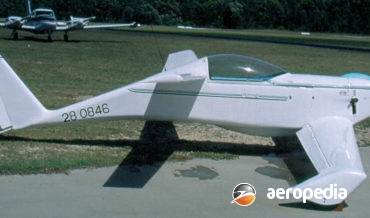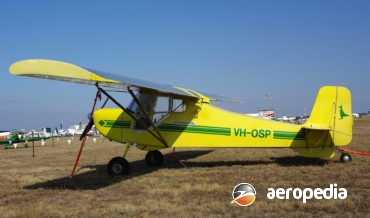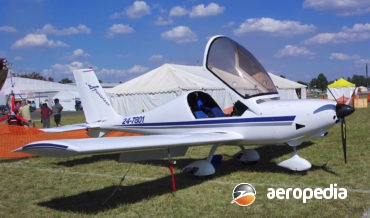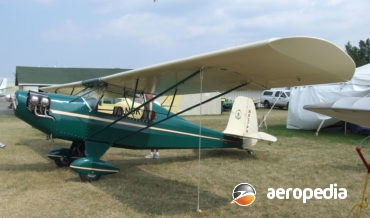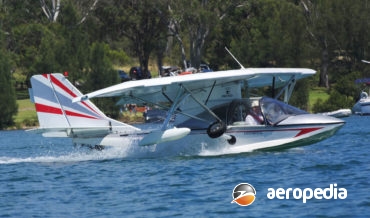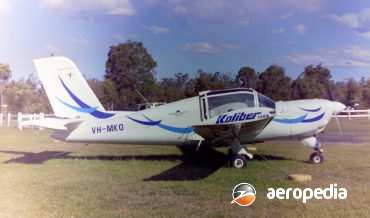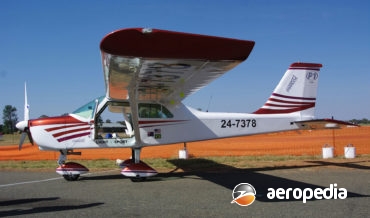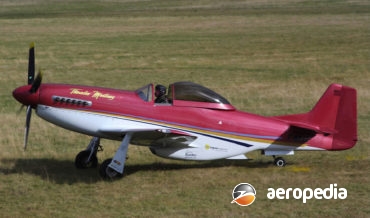All Contents
Contents
The SP-30 is a two-seat light sporting and training aircraft manufactured in Russia by Spectr Aero and is described as an upgrade and development of the Zenair CH-701 aircraft series with changes aimed at improving its performance and ability to meet requirements in the light-aviation field in Russia.
David C. Eyre
- May 8, 2019
Designed and developed in Canada by Spectrum, the Beaver is a strut-braced high-wing monoplane of aluminium tube construction with double surface Dacron covering, and with a Mylar reinforced leading edge.
David C. Eyre
- May 8, 2019
The Ultrabat was conceived by George Markey in Sydney, designed by Graham Swannell and built by Scott Winton and George Markey as a high performance sporting aircraft.
David C. Eyre
- May 8, 2019
Marketed by Sport Copter Inc of Scappoose, Oregon, the Vortex is one of a series of gyrocopters produced in three basic variants, the Sportscopter II, Vortex M-912 and the Lightning, the latter being a basic model.
David C. Eyre
- May 8, 2019
The Panther was designed by Daniel Weseman of Florida, US, a pilot and machinist who was involved in making conversions of the General Motors Corvair six-cylinder engine for installation in light aircraft.
David C. Eyre
- May 8, 2019
In 1985 Soloy Aviation Solutions converted a Cessna 206 to turbine power, replacing the Continental TIO-520 engine with a Rolls Royce / Allison 250 turboshaft, this engine providing in this installation 311-kw (417-shp) and gives better performance, safety and value, and since then other Cessna models including the 182 and
David C. Eyre
- May 8, 2019
The Onex is one of a series of light aircraft produced in the United States by Sonex Aircraft of Oshkosh in Wisconsin as a kit for amateur construction, the first Onex variant being flown for the first time on 27 January 2011.
David C. Eyre
- May 8, 2019
The Sonex is a light two-seat monoplane designed by John Monnett, designer of the Monnett Sonerai, Moni, and others, and was introduced in 1998.
David C. Eyre
- May 8, 2019
The SubSonex was designed by John Monnett and began as a dream in his mind for a personal sport jet that could be flown by someone with average to good pilot skills.
David C. Eyre
- May 8, 2019
The Waiex is a variant of the Sonex series of light all-metal aircraft and the main variation from the Sonex is a V-tail.
David C. Eyre
- May 8, 2019
The design of the Sidewinder was commenced in 1958 by Jerry Smyth of Huntington, Indiana, it being a two-seat side-by-side sporting monoplane.
David C. Eyre
- May 8, 2019
The CA-22 was built for ultralight regulations and development of the JAR/VLA variant produced the CA-22A and this became the first Australian-built aircraft to be certified in the Normal Category, but ultralight certification was also available.
David C. Eyre
- May 8, 2019
The Skybaby is one of many ultralight aircraft designed and manufacturers in the 1980s to meet US FAR 103 Ultralight Vehicle regulations.
David C. Eyre
- May 8, 2019
The Skyleader GP One is one of a series of light aircraft produced by Skyleader Aircraft, a subsidiary of Jihlavan Airplanes, in the Czech Republic.
David C. Eyre
- May 8, 2019
The Vixen is a two-seat light sporting aircraft available in kit form from Skystar Aircraft Corp at Nampa, Idaho, this company previously being known as Denney Aerocraft.
David C. Eyre
- May 8, 2019
The Maverick was designed by Graham Swannel and manufactured by Skytek Australia Pty Ltd of Willeton, WA.
David C. Eyre
- May 8, 2019
The Genesis is a two-seat, side-by-side, light touring and training aircraft supplied in kit form by SlipStream Industries Inc of Davenport, Idaho.
David C. Eyre
- May 8, 2019
In 1977 a Melbourne aircraft designer, Ross Nolan, proposed an aircraft known as the Opal, the aircraft to be of moulded fibreglass, with a 67-kw (90-hp) converted Volkswagen engine, have a cruising speed of 290 km/h (180 mph) and a range of 4,630 km (2,977 miles).
David C. Eyre
- May 8, 2019
The Revelation is a two-seat light sporting aircraft usually registered in the ultra-light category produced by Slip Stream Industries Inc in the US and was the result of deemed requirement for a two-seat training type for that part of the market.
David C. Eyre
- May 8, 2019
The Petrel is a two-seat single-engine light sporting amphibian. French engineer, Claude Tisserand, designed and developed in 1983 a small monoplane of wooden construction which was amphibious, this aircraft flying for the first time in November 1986.
David C. Eyre
- May 8, 2019
The DSA-1 Miniplane (DSA - Darned Small Airplane) was designed, and the prototype built, by Frank W Smith as a small open cockpit biplane of relative simple construction, to be constructed by amateur builders, and to be capable of some aerobatics.
David C. Eyre
- May 8, 2019
The Mynah 2 was a one-off homebuilt light biplane aircraft and although designed by Wallace and Robert McNair, it had no resemblance or linkage with the McNair Mynah, which is dealt with elsewhere.
David C. Eyre
- May 8, 2019
The HH-1 Hawker Hurricane was designed by Fred G Sindlinger in Washington as a ⅝-scale replica of the famous Battle of Britain fighter of World War II, being aimed at representing a scale version of the Hurricane IIc.
David C. Eyre
- May 8, 2019
Designed by Captain A M Sisler in Minnesota in the USA, the prototype of the series, known as the SF-2 Whistler, received the “Outstanding Design Contribution” award at the 1973 Experimental Aircraft Association fly-in at Oshkosh in Wisconsin.
David C. Eyre
- May 8, 2019
The Skyseeker was a light aircraft produced for the minimum aircraft market and which was sold in some numbers around the world.
David C. Eyre
- May 8, 2019
The Venture, and its co-produced Spirit, are light sporting aircraft produced in kit form by Questair Inc, which was formed by Edward MacDonough in the United States, the Venture being designed by James Griswold, an engineer with Piper Aircraft
David C. Eyre
- May 8, 2019
In 1975 Gene Sheehan and Tom Jewett began looking for a small, reliable engine with low fuel consumption to power a small, efficient, sporting aircraft
David C. Eyre
- May 8, 2019
The Sassy is marketed by Protech Aircraft Inc in Houston, Texas, and is a simple-to-build two-seat side-by-side amateur built aircraft with STOL performance.
David C. Eyre
- May 8, 2019
The Piper Aircraft Corp in 1947 re-organised its operating procedures and worked towards introducing a new model, the two-seat side-by-side PA-15 Vagabond powered by a 48-kw (65-hp) Lycoming O-145 engine.
David C. Eyre
- May 8, 2019
As would be expected, the S-2 was a natural two-seat development of the very popular single-seat S-1 series.
David C. Eyre
- May 8, 2019
The Sparviero (Sparrow Hawk) is an Italian designed two-seat light sporting monoplane of all composite construction built as a complete aircraft by Pro Mecc Srl of Corigliano d’Otranto, Italy.
David C. Eyre
- May 8, 2019
In 1923 Mr. Bernard Pietenpol built a Ford Model T powered biplane and in 1928 he built and flew the prototype of the Aircamper.
David C. Eyre
- May 8, 2019
The Pober Pixie was a single-seat light parasol wing sporting aircraft, the design of which began in January 1974, the prototype making its first flight some six months later.
David C. Eyre
- May 8, 2019
The SeaRey is produced in kit form by progressive Aerodyne Inc of Orlando, Florida.
David C. Eyre
- May 8, 2019
The Brako series of gyrocopters was designed by Enio Pagotto in and is manufactured at a facility in Italy by Pagotto Carpenterie sri at Pianzano.
David C. Eyre
- May 8, 2019
The P-1 is a light sporting aircraft which can be built in the Experimental aircraft category or as a Light Sports aircraft which is manufactured in Brazil by Paradise Industria Aeronautica Ltd.
David C. Eyre
- May 8, 2019
The Pegasus Aircar was designed by Mr Raymond Tolhurst of Pegasus Aerocars Design Australia Pty Ltd, and built by his company, Composite Engineering at Camden, NSW in the 1990s as an all-composite light aircraft seating two powered by a fuel-injected turbocharged Mazda rotary engine from an RX-7 motor vehicle driving
David C. Eyre
- May 8, 2019
The Proell O.1 was built by Proell Pty Ltd of Mannering Park, NSW and it was placed on the Australian Civil Aircraft Registered as VH-DSG (c/n 01) on 25 September 2000.
David C. Eyre
- May 8, 2019
The Thunder Mustang was produced by Papa 51 Ltd at its facility at Nampa, Idaho and is an all-composite three-quarter scale replica of the North American P-51 Mustang.
David C. Eyre
- May 8, 2019
Recent Comments
Archives
Categories
- No categories
Categories
- No categories
Latest Posts
Newsletter

